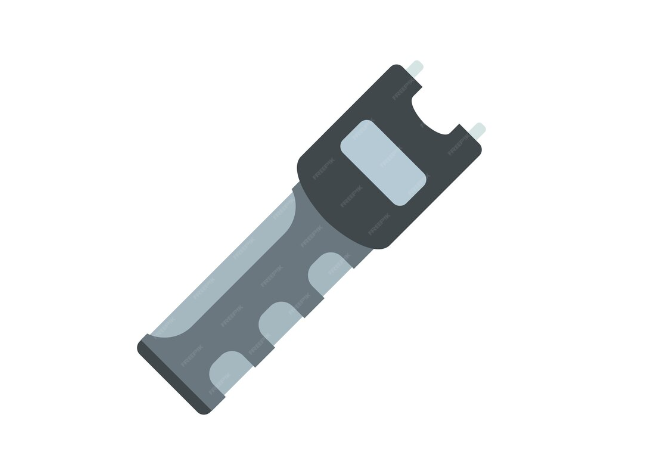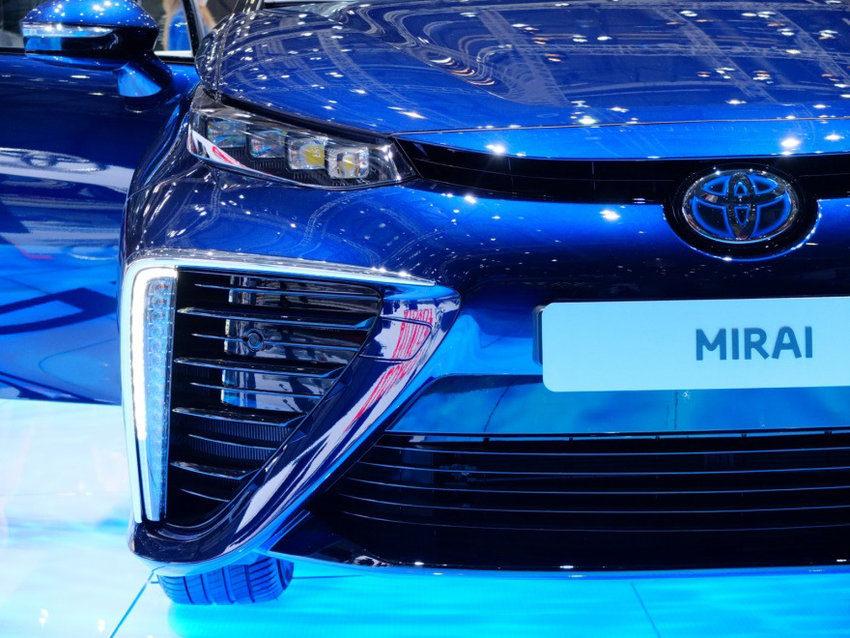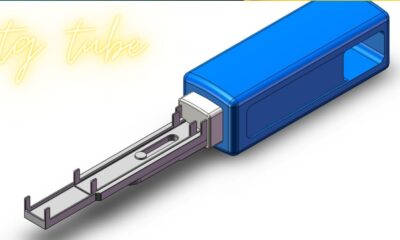Technology
CD Aux Cord: the Essence of Wired Audio Connectivity

Introduction
Despite wireless solutions dominating the audio technology industry, the cd aux cord remains a modest staple in an ever-evolving world. This little connection has survived the storm of wireless inventions and seen the analogue to digital conversion. This article delves into the world of CD aux cables, examining their composition, benefits, and continued significance in a society obsessed with wireless ease.
Definition of CD Aux Cord
A CD aux cord is essentially a connected audio connection that links many devices and allows audio signals to be sent.Even with the abundance of wireless solutions available, CD aux cables are still essential for dependable, high-quality audio connections.
Evolution of Audio Cables Transition from Analog to Digital
The general transition from analogue to digital formats is reflected in the development of audio cables. CD aux cables are compatible since they have evolved to accommodate new audio technologies.While wireless audio options became more and more common, CD aux cables persisted because they provided a reliable and interference-free connection.
Persistence of CD Aux Cords
CD aux cables are still in use today because of their ease of use, dependability, and excellent sound quality.With the use of insulating layers covering conductive materials, CD aux cables are able to transfer audio signals with little signal loss.These adaptable cables provide worldwide compatibility and may be used to connect a variety of devices, such as audio systems, computers, and smartphones.
Advantages of CD Aux Cords Enhanced Audio Quality
CD aux cables produce audio with great fidelity that is superior to that of wireless alternatives.CD aux cables offer a solid and dependable audio transfer, in contrast to wireless connections that are prone to interference.When compared to certain expensive wireless options, CD aux cables are a more affordable choice that doesn’t sacrifice sound quality.
Common Misconceptions
We illustrate situations where CD aux cords function better than their wireless counterparts, dispelling the misconception that wireless is always better.Despite popular belief, CD aux cords are robust and may tolerate frequent use if properly cared for.
How to Choose the Right CD Aux Cord
Considerations such as cable gauge and length are crucial when selecting the best CD aux cord for a certain purpose.A comprehensive awareness of connector types helps prevent connectivity issues and ensures smooth device compatibility.By performing simple maintenance tasks, you may significantly extend the life of your CD aux cord and ensure uninterrupted performance.
Maintaining Your CD Aux Cord
Suitable upkeep and storage stop deterioration, maintaining the cord’s integrity over time.Using CD Aux Cords in Various Environments
Audio Systems for HomesAs a direct and superior connection between audio sources and speakers, CD aux cords are a mainstay of home audio systems.
CD Aux Cords in Different Settings
With a consistent interface, the car industry still incorporates CD aux wires into audio systems.Future Directions for Emerging Technologies in Audio ConnectivityEmerging technologies suggest that wired connections—like CD aux cords—will continue to be useful even with the emergence of WiFi.
Future Trends in Audio Connectivity
The next generation of CD aux cords will investigate environmentally friendly materials and production techniques in line with sustainable principles.Reviews and Experiences from UsersTestimonials from Music LoversExperiences from fans who value the special benefits of CD aux cords demonstrate the positive aspects of these devices in real life.
User Reviews and Experiences
We address frequent customer complaints and offer analysis and fixes to improve the overall CD aux cord experience.Troubleshooting Typical Problems
Problems with Static and InterferenceAux CordsViews from professionals in the field throw light on CD aux cables’ lasting significance and special place in the audio world
Conclusion
Experts forecast that CD aux cables will remain important and play a significant part in the advancement of audio technologies.Summary of CD Aux Cord Advantages in ConclusionWe highlight the long-lasting advantages of CD aux cords in an ever-evolving audio scene by summarising their main benefits.Concluding Remarks on its SignificanceFinally, we consider the continuous usefulness of CD aux cords and emphasise their special place in audio communication.
How To
Taser High Voltage: Understanding its Mechanism and Impact

Introduction
The Taser, an acronym for “Thomas A. Swift’s Electric Rifle,” has become synonymous with non-lethal law enforcement. One of its key components is high voltage, a critical factor influencing its effectiveness and safety. This article delves into the specifics of Taser high voltage, its function, impact, and safety considerations.
What is a Taser?
Taser devices are electroshock weapons that use electrical currents to disrupt voluntary control of muscles, causing neuromuscular incapacitation. They’re widely employed by law enforcement to subdue suspects without causing significant harm.
Components of a Taser
- High Voltage Module:
- The heart of a Taser is its high voltage module, generating electrical pulses.
- Voltage typically ranges from 50,000 to 150,000 volts in most commercial Tasers.
- Despite the high voltage, the amperage—the actual current—is low, reducing the risk of causing lethal harm.
- Power Source:
- Tasers use lithium batteries or replaceable cartridges to power the high voltage module.
How Does Taser High Voltage Work?
- Electrostatic Discharge:
- When activated, the Taser releases two probes connected by wires.
- These probes deliver high-voltage, low-current electrical pulses, creating an arc of electricity.
- Neuromuscular Incapacitation:
- The electrical pulses disrupt the body’s normal electrical signals, causing involuntary muscle contractions.
- This disrupts neuromuscular control, leading to temporary incapacitation.
Impact on the Human Body
- Pain and Discomfort:
- Taser activation causes severe pain and discomfort due to intense muscle contractions.
- However, once the Taser is deactivated, the effects are usually short-lived.
- Potential Risks:
- While Tasers are generally considered non-lethal, there have been instances of complications, especially in individuals with pre-existing heart conditions.
- Medical experts advise caution when using Tasers, particularly on vulnerable populations.
Safety Considerations and Regulations
- Law Enforcement Guidelines:
- Law enforcement agencies often have strict protocols on Taser usage.
- Guidelines emphasize using Tasers as a last resort and avoiding prolonged or repeated shocks.
- Training and Education:
- Proper training on Taser use is crucial for law enforcement officers to minimize risks.
- This includes understanding the physiological effects and recognizing situations where Taser use is appropriate.
Misconceptions Surrounding Taser High Voltage
- Lethality vs. Non-Lethality:
- Despite high voltage, Tasers are designed to be non-lethal due to their low amperage.
- However, misuse or application on vulnerable areas can lead to adverse outcomes.
- Long-Term Health Effects:
- Studies on the long-term effects of Taser high voltage on human health are inconclusive.
- Continued research is necessary to understand any potential long-term implications.
Conclusion
Taser high voltage plays a pivotal role in the functioning of these electroshock weapons, offering law enforcement a non-lethal means of incapacitating suspects. While generally considered safe when used correctly, caution and adherence to guidelines are essential to mitigate potential risks. Understanding the mechanism and impact of Taser high voltage is crucial for ensuring its responsible and effective usage in law enforcement scenarios.
FAQS:
Technology
Driving into the Future: Mitsubishi Motors’ Hybrid Revolution

Embracing the Future: Mitsubishi Motors
In today’s rapidly evolving automotive landscape, the quest for eco-friendly and efficient transportation solutions has gained significant momentum. Mitsubishi Motors, a pioneer in automotive technology, has been at the forefront of this movement with its innovative hybrid vehicles. This article explores the essence of Mitsubishi Motors’ hybrid technology, its advantages, models, and the future prospects of these groundbreaking vehicles.
Understanding Mitsubishi Motors’ Hybrid Technology
Mitsubishi Motors’ hybrid vehicles integrate advanced technologies that merge internal combustion engines with electric power. Their hybrid system operates through a combination of a gasoline engine and electric motors, working in tandem to optimize fuel efficiency and reduce emissions.
The Powertrain: A Harmonious Blend
The powertrain of Mitsubishi Motors’ hybrids comprises a gasoline engine and an electric motor powered by a high-capacity battery. This synergy allows for seamless transitions between electric and gasoline power, ensuring optimal performance while minimizing environmental impact.
Regenerative Braking: Harnessing Energy
A key feature of Mitsubishi’s hybrid technology is regenerative braking, which converts kinetic energy produced during braking into electrical energy. This recycled energy recharges the battery, enhancing overall efficiency and range.
Advantages of Mitsubishi Motors Hybrid Vehicles
Mitsubishi Motors’ commitment to eco-friendly innovation results in several compelling advantages for hybrid vehicle owners.
Fuel Efficiency and Reduced Emissions
The integration of electric power significantly enhances fuel efficiency, reducing reliance on gasoline and subsequently lowering emissions. This eco-conscious approach aligns with the global pursuit of sustainable transportation.
Enhanced Driving Experience
The hybrid technology in Mitsubishi vehicles offers a smooth and quiet driving experience. The electric power component provides instant torque, delivering impress9ive acceleration and a serene driving environment.
Environmental Sustainability
By reducing the carbon footprint through decreased emissions, Mitsubishi Motors’ hybrids contribute to preserving the environment. The company’s dedication to sustainability extends beyond individual vehicles, aiming to create a more eco-friendly automotive industry.
Mitsubishi Motors Hybrid Models
Mitsubishi Motors has introduced several hybrid models, each showcasing the brand’s dedication to innovation and sustainability.
Outlander PHEV: Pioneering Excellence
The Outlander Plug-in Hybrid Electric Vehicle (PHEV) stands as a testament to Mitsubishi’s commitment to cutting-edge hybrid technology. With its versatile capabilities and eco-friendly design, the Outlander PHEV has carved a niche in the hybrid SUV segment.
Eclipse Cross PHEV: Blending Style and Efficiency
The Eclipse Cross Plug-in Hybrid Electric Vehicle combines sleek design with efficient hybrid technology. This crossover offers a dynamic driving experience while prioritizing fuel efficiency and low emissions.
The Future of Mitsubishi Motors Hybrid Technology
Looking ahead, Mitsubishi Motors continues to invest in research and development to enhance its hybrid technology further. The company aims to expand its hybrid lineup, introducing innovative features and improving overall performance and efficiency.
Conclusion: Driving Towards a Sustainable Future
Mitsubishi Motors’ commitment to hybrid technology reflects its dedication to sustainable transportation solutions. Through continuous innovation, the company strives to redefine the automotive industry’s landscape, offering eco-friendly vehicles without compromising performance or style.
In conclusion, Mitsubishi Motors’ hybrid vehicles stand as a beacon of innovation, blending cutting-edge technology with a commitment to environmental responsibility. As the automotive industry progresses towards a greener future, Mitsubishi Motors remains a frontrunner in pioneering hybrid excellence.
FAQS:
Lifestyle
Unveiling the Toyota Mirai: Pioneering the Future of Green Mobility

Introduction:
The Toyota Mirai stands as a testament to innovation in the automotive industry, heralding a new era of eco-friendly transportation. This article delves into the intricacies of the Toyota Mirai, exploring its revolutionary technology, environmental impact, driving experience, and its role in shaping the future of mobility.
Genesis of the Toyota Mirai
The Toyota Mirai, which means “future” in Japanese, made its debut in 2014, marking Toyota’s foray into hydrogen fuel cell technology. It stemmed from Toyota’s commitment to developing sustainable transportation solutions, aiming to reduce carbon emissions and dependence on fossil fuels.
Revolutionary Hydrogen Fuel Cell Technology
-
Fuel Cell Powertrain:
At the heart of the Mirai lies its fuel cell stack, which converts hydrogen into electricity through an electrochemical process. This generates power to propel the vehicle, emitting only water vapor as a byproduct, making it a zero-emission vehicle.
-
Efficiency and Performance:
The Mirai’s fuel cell technology offers impressive efficiency and performance, providing a driving range of approximately 400 miles on a full tank of hydrogen, coupled with quick refueling times.
Environmental Impact
-
Zero Emissions:
Unlike conventional internal combustion engine vehicles, the Mirai produces zero tailpipe emissions, significantly reducing greenhouse gas emissions and combating air pollution.
-
Sustainable Fuel Source:
Hydrogen, the fuel used in the Mirai, can be produced from various renewable sources, such as solar or wind energy, contributing to a more sustainable energy ecosystem.
Driving the Future: User Experience
-
Silent Operation:
The Mirai delivers a quiet and smooth driving experience, characteristic of electric vehicles, owing to its lack of a traditional combustion engine.
-
Advanced Features:
Equipped with state-of-the-art technology and safety features, the Mirai offers a comfortable and futuristic driving experience, blending performance with sustainability.
Infrastructure Challenges and Expansion
-
Challenges in Infrastructure:
Despite its potential, the widespread adoption of hydrogen fuel cell vehicles faces challenges related to the establishment of a robust hydrogen infrastructure, including refueling stations.
-
Global Expansion Efforts:
Toyota and other stakeholders are actively working to expand hydrogen infrastructure globally, promoting. The adoption of fuel cell vehicles like the Mirai.
Toyota Mirai: Shaping the Future of Mobility
-
Impact on the Automotive Industry:
The Mirai serves as a catalyst for innovation, inspiring other manufacturers to explore hydrogen fuel cell. Technology and invest in sustainable transportation solutions.
-
Contributing to a Greener Future:
By pioneering hydrogen fuel cell technology. The Mirai contributes to the transition towards a more sustainable and eco-conscious automotive industry, reducing carbon footprints and environmental impact.
Conclusion:
FAQS:
1. What is the fuel source for the Toyota Mirai, and how does its hydrogen fuel cell technology work?
The Toyota Mirai utilizes hydrogen as its fuel source, which undergoes a process in the fuel cell stack. This stack converts hydrogen into electricity through an electrochemical reaction, generating power to propel the vehicle. The result is a clean and efficient energy conversion that produces only water vapor as a byproduct.
2. How does the Toyota Mirai contribute to environmental sustainability?
The Toyota Mirai significantly contributes to environmental sustainability by producing zero tailpipe emissions. As a hydrogen fuel cell vehicle, it eliminates the release of harmful pollutants associated with traditional combustion engines. Additionally, the Mirai promotes a more sustainable energy ecosystem since hydrogen, its fuel source, can be produced from renewable sources, such as solar or wind energy.
3. What challenges does the Toyota Mirai face in terms of infrastructure, and how is Toyota addressing them?
One challenge facing the widespread adoption of the Toyota Mirai is the establishment of a robust hydrogen infrastructure, including the development of refueling stations. Toyota, along with other stakeholders, is actively working towards addressing this challenge through global expansion efforts. These initiatives aim to create a network of hydrogen refueling stations, supporting the growth of hydrogen fuel cell vehicles like the Mirai.
-

 Technology7 months ago
Technology7 months agoKooraLive English: Guide to Live Sports Streaming
-

 Technology7 months ago
Technology7 months agoSSIS 816 Revolutionizing Data Integration
-

 Health7 months ago
Health7 months agoOptimizing Health: The Comprehensive Guide to TG Tubes
-

 Lifestyle5 months ago
Lifestyle5 months agothe Charm of Villages: Decoding the Loofa Code
-

 Entertainment6 months ago
Entertainment6 months agothe Mystery: packgod face reveal
-

 Business4 months ago
Business4 months agoSimplifying Work Life: NetchexOnline Employee Login
-

 Technology7 months ago
Technology7 months agoThe Power of Innocams
-

 Technology6 months ago
Technology6 months agoPotential of Pixwox: Your Guide to Superior Visual Content
